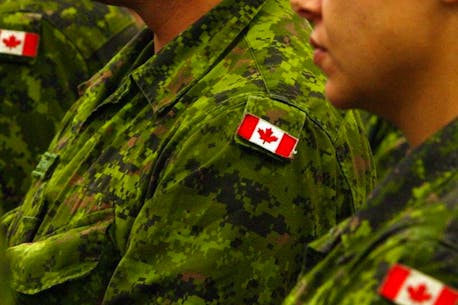Final arguments are to be heard next week

NationTalk: SaltWire – ST. JOHN’S, N.L. — Testimony has wrapped up, but observers across the country are interested to see what comes of a court case in St. John’s involving a group of Mi’kmaw residents whose memberships in the Qalipu First Nation were revoked when a new point system was brought in to reassess applications.
Summary statements by lawyers for the six plaintiffs and two defendants — the Federation of Newfoundland Indians (FNI) and the Government of Canada — will be heard Tuesday, Jan. 31, and Wednesday, Feb. 1.
Read more
Armed Forces and RCMP members must provide proof of service to Qalipu enrolment review committee


As a study in how Indigenous identity is argued and legislated in the modern era, the case has captured the attention of Indigenous groups and advocates across the country, some of whom say it could set a precedent.
Tamara Pearl, a One Arrow First Nation member who teaches law at the University of Alberta, says the point system implemented in 2013 is particularly intriguing.
“A point system may sound weird, but the moment we start creating boundaries of who’s in and who’s out, the question of criteria does become necessary,” she told CBC Radio’s “Newfoundland Morning” this week. “Can the court really impose a one-size-fits-all approach to this issue? I think that does seem inappropriate on first blush. Indigeneity can’t be reduced to straight-forward arithmetic.”

Existing Indigenous bands in Canada decide for themselves how to assess membership, but the Qalipu case presents a unique dilemma because the Federation of Newfoundland Indians is more of a steering committee than a recognized native entity.
“It’s now just about who the collective recognizes, but what is the collective, and how do you define its members in the abstract?” Pearl said.
The Friends of Qalipu Advocacy Association launched the court action in 2018.
The six plaintiffs are represented by lawyer Keith Morgan.
Here’s a timeline of how the Qalipu First Nation came into being:
1949
Newfoundland (later Newfoundland and Labrador) becomes Canada’s 10th province, but the Indian Act is not applied to existing Indigenous groups, leaving their status within the federation undetermined.
1972
Indigenous groups come together to form the Native Association of Newfoundland and Labrador with the goal of achieving full recognition for the Mi’kmaq, Innu and Inuit people in the province. When the Innu and Inuit left the organization two years later, it was renamed the Federation of Newfoundland Indians.
1987
Ottawa recognizes the Miawpukek First Nation, and their community at Conne River becomes reserved Mi’kmaw land. Other Mi’kmaw groups remain unrecognized.

1989
The FNI, including the chiefs of six Mi’kmaw bands, sues Ottawa in federal court for recognition under the Indian Act. Shortly afterward, the federal government agrees to enter into talks.
2003
After more than a decade of on-and-off negotiations, the FNI decides to halt its court case to enter formal talks.
2008
Canada and the FNI officially ratify an agreement in principle to recognize the landless Qalipu First Nation, and the first stage of the enrolment process begins.
2011
After the dismissal in federal court of an action to delay its formation, the Qalipu First Nation becomes officially recognized, with a founding membership of almost 24,000 people.

2013
Following a surge in applications for membership that topped 100,000 the FNI and Ottawa announce a supplemental agreement whereby all unrejected applications, including those that had already been accepted, would be assessed under a new point system. A new deadline for enrolment was set for 2015, and later extended.
2018
Results of the membership committee’s final review of applications results in 13,479 founding members remaining on the updated list, and about 5,000 people were added. But more than 10,000 founding members had their membership revoked. Altogether, more than 71,000 applications were rejected.
Peter Jackson covers Indigenous affairs for The Telegram.